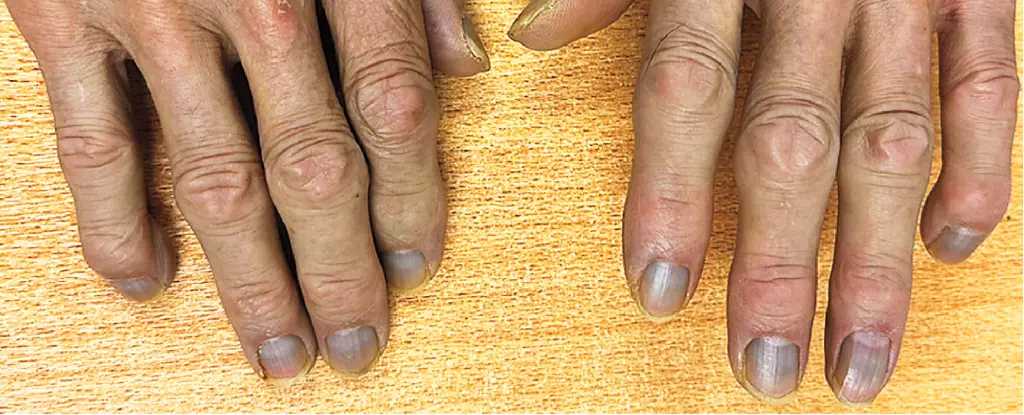In the realm of medical oddities, few conditions capture the imagination quite like argyria. This rare disorder is characterized by a unique and noticeable discoloration of the skin, resulting from excessive silver accumulation in the body. An insightful case involving an 84-year-old man who presented at a Hong Kong hospital accentuates the curious nature of this condition. With symptoms emerging from complications of urinary flow obstruction, clinicians were faced with an enigma: the patient’s skin, eyes, and nails bore a distinct ashen hue, reported to have been present for nearly five years. Such a striking presentation raised numerous questions about its origins and implications.
The Culprit: Silver Accumulation
Subsequent blood tests shed light on the root cause of the patient’s condition. The analysis revealed a staggering concentration of silver—over 40 times greater than the normal levels found in healthy individuals. This systemic saturation caused silver to aggregate in the membranes of his sweat glands, blood vessels, and dermal fibers, leading to the condition known as argyria. The phenomenon occurs through the deposition of silver in the body’s tissues, which may manifest in a slate-gray or even blue hue in more severe cases. Historically, argyria was predominantly noted among those in occupations that involved direct contact with silver, such as miners or artisans. However, the origins of silver buildup have evolved in modern times due to the controversial use of silver-based medications, particularly colloidal silver, which lacks scientific validation for safety or efficacy.
Colloidal silver has gained notoriety as a so-called health supplement believed by some to have detoxifying properties. Despite its widespread availability, it is essential to recognize that the US Food and Drug Administration has deemed colloidal silver neither safe nor effective for treating any medical condition. The unfounded claims surrounding its alleged health benefits have led to individuals unintentionally exposing themselves to the risk of developing argyria. Silver ions can enter the body through various routes, including inhalation, ingestion, or skin absorption. Once inside, these charged particles can circulate and deposit in tissues, often triggered by exposure to ultraviolet radiation, which catalyzes a chemical reaction that discolors the skin.
An Enigmatic Case without Clear Origin
In the case of the elderly patient, the absence of apparent environmental exposure is particularly puzzling. Having worked as a waiter, a profession not typically associated with silver exposure, the man had no discernible source of contamination in his employment. Additionally, the lack of similar cases among his neighbors suggests that his home environment was unlikely the origin of the silver intake. This raises a thought-provoking question: what underlying factors contributed to his condition? The mystery surrounding the source of silver accumulation emphasizes the need for meticulous investigation into individual medical histories and potential hidden exposures.
Fortunately, while the cosmetic effects of argyria can be troubling to those affected, the condition is generally benign regarding overall health. Research indicates that significant health risks arise mainly at extremely high concentrations of silver, and for most individuals, the impacts on drug absorption are minimal. The patient, while confronted with a lasting slate-gray appearance, faces no substantial long-term health detriments. Nonetheless, the permanence of the staining remains a source of concern, as there is currently no known treatment or remedy to effectively remove excess silver from the body.
As the patient continues under the watchful eye of his healthcare providers, the case of argyria serves as a reminder of the complex interactions between our environment and our health. It illustrates the need for vigilance regarding the substances we ingest and the importance of scientific inquiry in understanding seemingly innocuous products. Until the origins of this particular case can be elucidated, it stands as a compelling testament to the enduring mysteries within human health and the ever-evolving relationship we have with the materials that surround us.

